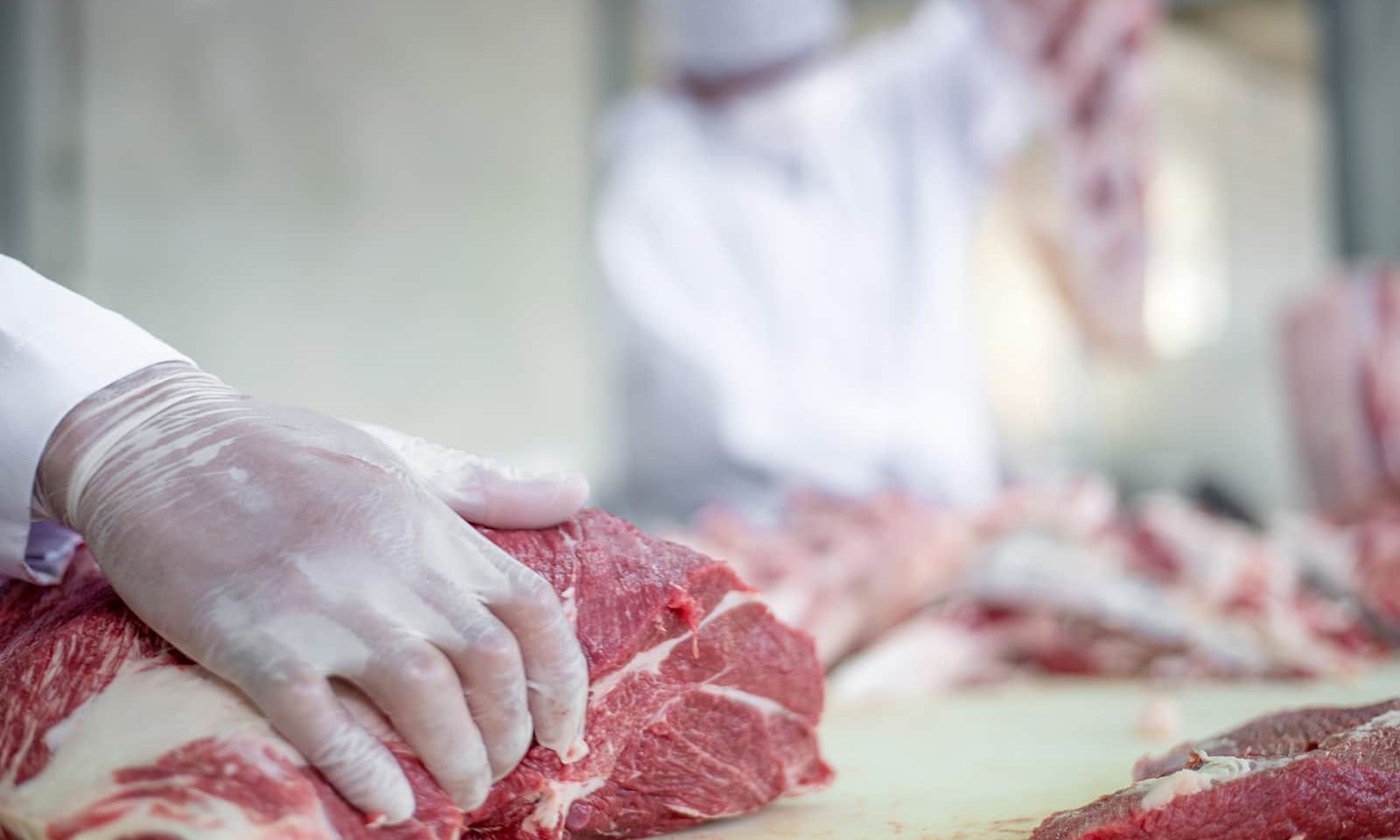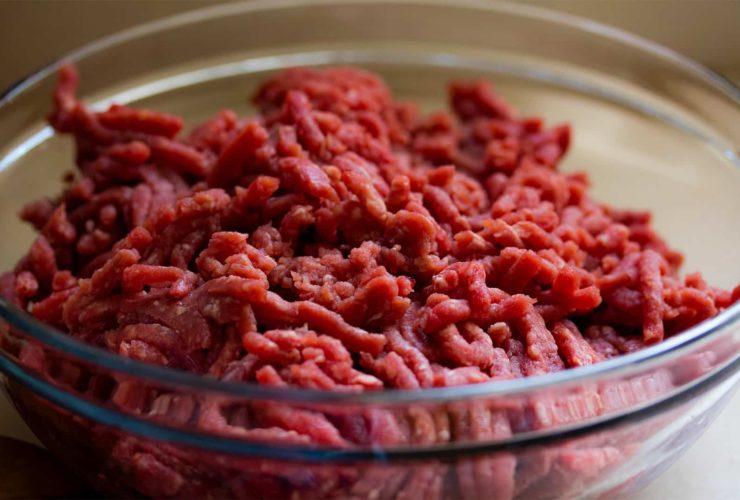As the COVID-19 (coronavirus) outbreak makes its way across the country, food processors are asking an important question: how do I prevent a confirmed case from showing up in my food processing plant?
That’s a question every food processor, from the largest in the country down to the local butcher shop, should be asking.
The Food and Drug Administration (FDA) and the Center for Disease Control (CDC) haven’t found any evidence that COVID-19 can be spread through food or food packaging as it leaves a food processing facility — a great sign for food processors that their products won’t spread the virus even further.
However, a confirmed case of the virus in your plant can cause other setbacks.
The Damage of a Confirmed Case
A confirmed case of COVID-19 in your food processing plant can wreck a lot of havoc on your business and on the food supply chain as a whole.
Consider these effects of a confirmed case of COVID-19:
- Damages your brand reputation. People aren’t thinking rationally right now out of fear and panic. The report of a confirmed case in your facility can cause many to stop buying your products and think less of your brand name.
- Reduces your workforce. Infected employees won’t be able to come to work, meaning your workforce and your production will be reduced.
- Destroys morale. Healthy employees won’t want to come to work when they know someone near them has tested positive for the virus. People are scared and want to keep themselves and their families safe.
- Disrupts the food supply chain. When production goes down, especially over longer periods of time, it messes with our domestic food supply.
That last point should not be overlooked.
Disruptions to our domestic food supply chain, especially long term disruptions, lead to shortages across the country. As food becomes scarce in the grocery stores, people begin to panic, buy up everything they can, which then incites more panic.
Keeping the food supply chain as regular as possible will help to alleviate fear and panic in the population.
Reduce the Risk of a Confirmed Case
So how can food processors eliminate the risk of a confirmed case of COVID-19 in their facilities?
The FDA recommends processors update their food safety plans to asses and address potential hazards from the transmission of the virus on food and food packaging, while the CDC recommends putting practices in place to keep your employees healthy.
Consider these steps to help prevent the risk of a confirmed case of COVID-19 in your plant:
Focus on Employee Hygiene and Health
According to the CDC, frequent and regular washing of hands, social distancing, and sanitizing surfaces are still the best ways to prevent the spread of COVID-19.
The first step in eliminating the risk of a confirmed case in your facility is to instruct your employees on these safety practices.
The World Health Organization (WHO) and the CDC recommend the following:
- Wash hands often with soap and water, or use an alcohol-based hand sanitizer if soap and water are unavailable
- Avoid touching eyes, nose, and mouth with unwashed hands
- Avoid close contact with people who are sick
- Stay home when feeling sick
- Cover coughs or sneezes with a tissue, then throw the tissue in the trash
- Clean and disinfect frequently touched objects and surfaces
Limiting the spread of the disease is the most important step you can take to protect your employees and their families. It will also reduce the potential contact of the virus with food and food packaging.
Perform Health Checks
Many businesses have adopted a daily (or bi-daily) health checks on all employees and sent any home that exhibited signs of any kind of sickness, even if their symptoms aren’t associated with COVID-19.
Temperature checks, looking for signs of employees being flushed, profuse sweating, and of course, any coughing should result in employees being sent home immediately and their work stations thoroughly cleaned and sanitized.
Practice Social Distancing in the Plant
Keeping employees the recommended 6 feet apart can be tricky in a food processing plant, especially when you have a number of employees working on the same piece of equipment, but it’s not impossible.
Here are some steps other food processors are taking to practice social distancing in the workplace:
- Stagger shifts to limit the number of employees at workstations and in changing and break rooms
- Set up temporary workstations to separate employees
- Reallocate employees to other areas
- Stagger workstations
Increase Cleaning and Sanitation Protocols
According to researchers at John Hopkins University, the COVID-19 virus can live on the following surfaces for long periods of time:
- Plastics: up to 72 hours
- Stainless Steel: up to 48 hours
- Cardboard: up to 24 hours
- Copper: up to 4 hours
- Detectable in the air: up to 3 hours
Taking steps to increase the cleaning and sanitation of commonly touched surfaces will help reduce the risk of employees catching the virus.
Consider the following:
- Taking regular breaks to clean and sanitize
- Checking cleaning chemicals to ensure they will kill the COVID-19 virus
- Review cleaning protocols with all employees
- Adding additional wash stations so employees can wash their hands more
Limit Travel to Highly Affected Areas
Employers should limit all nonessential business travel during the outbreak to prevent the spread of the virus, especially to affected areas or areas of increased exposure risk. This will help prevent the virus from spreading to new locations.
However, limiting travel is not always possible, especially if it is essential for your business.
If that is the case, you should check the CDC’s website regularly to ensure they have the latest on travel restrictions and recommendations about best practices for avoiding transmission.
Reporting and Restrictions after Travel or Exposure
The CDC also recommends a 14-day self-quarantine after traveling or exposure to the COVID-19 virus to help prevent the spread of the disease, even if you show no symptoms.
Implementing a policy where employees are required to stay home or work from home after travel or exposure to the virus will help keep others in your workforce from coming in contact with the virus.
Limit Risks of Potentially Sick Employees
COVID-19 is an asymptomatic transmission virus, meaning it is possible that some employees might have the virus but exhibit no symptoms — making it difficult to fully detect the virus with health checks.
In addition to promoting and supporting employee health practices, processors should asses the risk of an infected employee transmitting the virus to food or food packaging during the manufacturing process.
Evaluate and implement process controls that could further limit that risk, including:
- Verify existing or new “kill steps,” such as cooking the food
- Add more frequent, additional, or different sanitation steps for equipment, utensils, food contact surfaces, etc.
- Install barriers to keep employees at a certain distance of the exposed product, especially at critical steps
- To the extent feasible, maximize automation and minimize human intervention
These steps will not only help prevent to spread of the virus in your facility, should an employee be infected but show no symptoms, but will also reduce the risk of the virus spreading through your food product and packaging.
Preventative Controls for Finished Product
If there is a chance the virus would survive the process into a finished, packaged product, consider whether any additional kill steps could be taken to limit that risk, including:
- Could the finished product be sanitized to kill the virus on the packaging?
- Would holding the finished product for a period of time before shipping kill the virus?
- Would additional instructions to customers be appropriate to further mitigate any risks of exposure by contact?
Again, this step not only reduces the risk of the virus spreading in your facility if an employee is infected but shows no symptoms, but will also reduce the risk of the virus spreading through your packaged food process.
Bonus Tip: Invest in Our COVID-19 Guards
Separating employees the required 6 feet is essential to preventing the spread of the virus, but it’s not always possible on large production lines where operators are standing next to each other.
The next best option is to invest in our COVID-19 Guards.
These guards easily weld or bolt onto any conveyor or equipment and place a 4-foot tall poly-carbonate shield between employees that can easily be wiped down with disinfectant.
It’s the easy and cost-effective way to help prevent the spread of the Coronavirus in your plant.
Protect Your Plant
COVID-19 isn’t going away anytime soon. The tips laid out above will help food processors to reduce the risk of having a confirmed case of the virus in their facility and prevent the virus from being spread through food and food packaging.
As we learn more about the virus, these suggestions may change. We suggest that you regularly review the CDC’s recommendations on how to prevent the spread of the disease.




